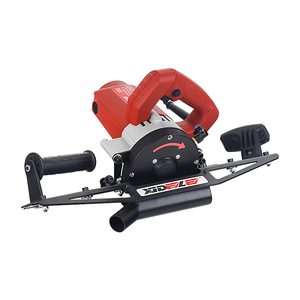

Hot Selling Made In Korea Professional High Efficiency TRP 300 II Hydraulic Pulverizer For Rock Breaking










Rock cutting tools are essential for various industries, particularly in construction and mining. These specialized tools are designed to break, cut, and remove rock material efficiently. With a range of applications, from precision stone carving to robust rock excavation, the right tool selection is crucial for productivity and effectiveness.
The diversity of rock cutting tools encompasses a variety of equipment, each suited for specific tasks. Lapidary saw blades and lapidary diamond saws are commonly used for precise cutting of gemstones, while heavy-duty rock cutting machines tackle larger operations such as quarrying. For detailed work, a dremel bit for rock carving or a dremel rock cutting bit can shape and etch with precision. Handheld options like rock cutting hand tools and sheet rock saws offer portability and ease of use in confined spaces.
The application of rock cutting tools ranges from creating intricate jewelry to constructing roads. In mining, tools like a rock slab saw or a tile saw for cutting rocks are indispensable for extracting materials. Construction projects may utilize a sheet rock cutter for drywall installations. These tools feature robust materials and designs, such as rock saw blades made to withstand the rigors of cutting through hard stone.
Materials used in rock cutting tools must be durable and resistant to wear. Many cutting edges are tipped with materials like diamond or carbide to maintain sharpness and efficiency. The advantages of using specialized tools include increased accuracy, reduced labor, and the ability to cut through various rock densities and compositions.
Selecting the appropriate rock cutting tool requires understanding the specific needs of a project. Factors such as the type of rock, the precision required, and the scale of the operation will influence the choice. For instance, a wet saw for cutting rocks may be ideal for projects needing water to reduce dust and heat during cutting.
To ensure the effective operation of rock cutting tools, it is important to consider the tool's compatibility with the material and the project's scope. Tools should be matched to the rock's hardness, and the machinery's power capacity should align with the project's demands. Regular maintenance of the tools is also crucial to preserve their cutting ability and extend their lifespan.